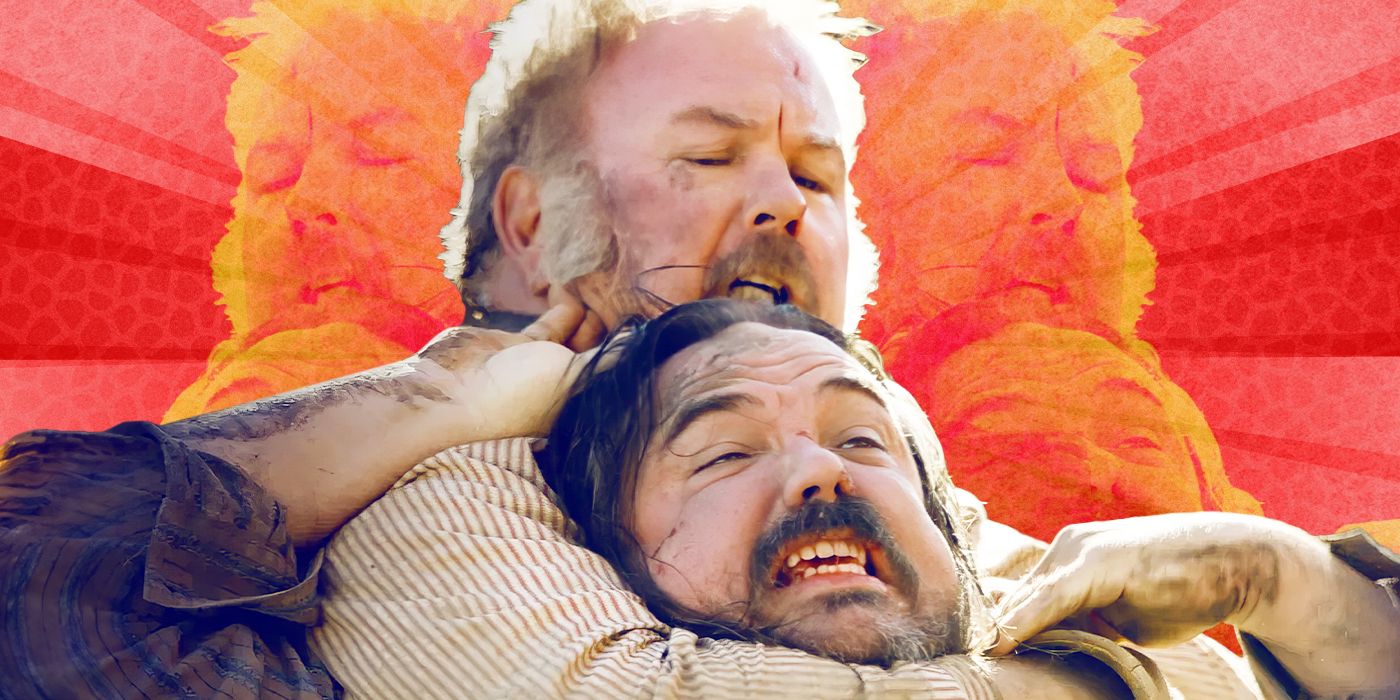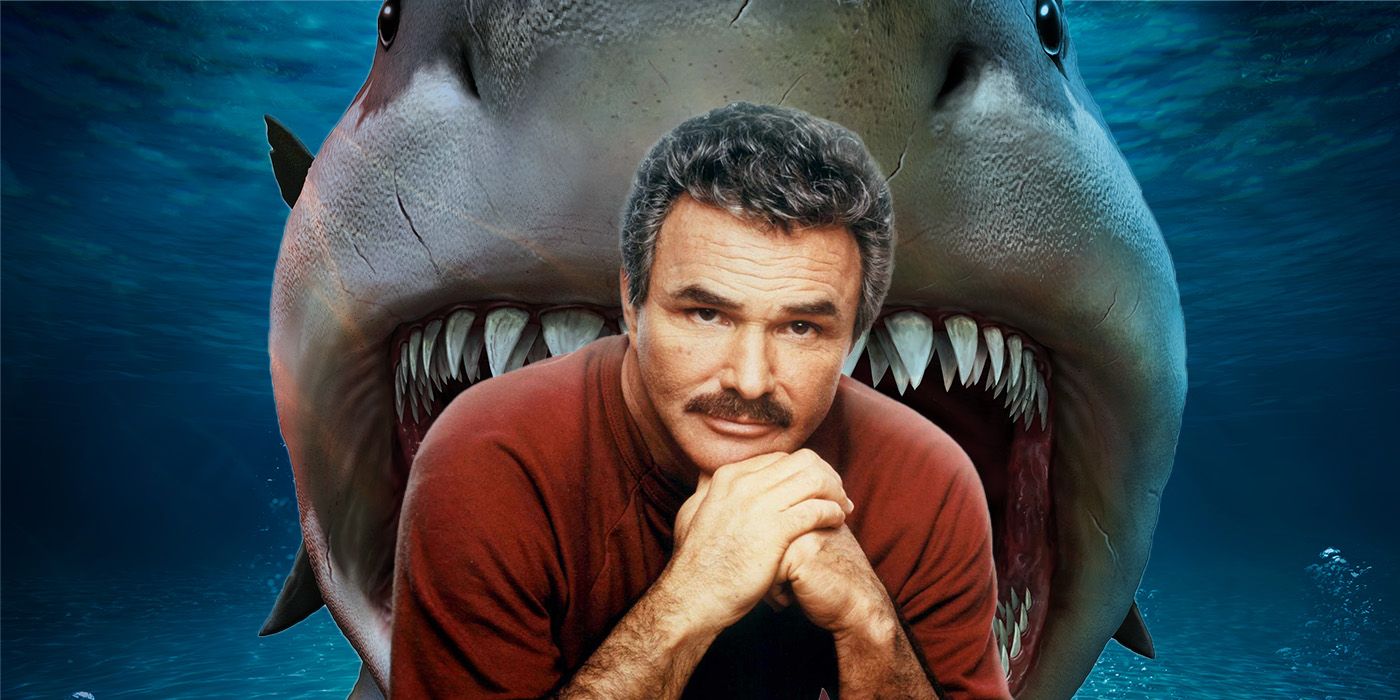The Big Picture
- Dan Dority’s character in Deadwood reflects the show’s exploration of violence and the cost of building the American West.
- The brutal fight scene between Dan and Turner highlights the true nature of the “Wild” West, won through violence.
- Swearengen’s disregard for the trauma inflicted on Dan demonstrates the harsh reality that America was built on bloodshed.
By the third season of David Milch‘s acclaimed HBO series Deadwood, the titular town is being turned upside down by two warring despots. On one side is Ian McShane‘s iconic Al Swearengen, the criminal cut-throat/saloon owner and de facto community leader. On the other is Gerald McRaney‘s George Hearst, the industry titan and interloper bringing modern big business to the gold-mining town. The show uses Western genre conventions to reflect on real-world events but always portrays an especially grounded version of the preindustrial American West. When the two power brokers finally come to blows, it is not directly, but rather through their cronies. The ensuing fight is one of the most brutal sequences in the show (or any Western for that matter) and permanently changes Dan Dority (W. Earl Brown), Swearengen’s henchman, and one of the most subtly interesting characters in the show.
Deadwood
A show set in the late 1800s, revolving around the characters of Deadwood, South Dakota; a town of deep corruption and crime.
Dan Dority Is at the Heart of What Makes ‘Deadwood’ Great
Dan, played by the always excellent W. Earl Brown, starts out seeming relatively straightforward. Compared to Timothy Olyphant‘s seething Sheriff Seth Bullock or Powers Boothe‘s slimy Cy Tolliver, Dan seems modest. Simply put, he’s a killer. Ever loyal and working at the behest of Swearengen, who presides over the town like a mob boss and mayor at once, Dan does the dirty work. Brutish and slightly smarter than he lets on, he is typically Swearengen’s most reliable gun. For a while, that’s all he is. As the show goes on though, it deeply examines the role of violence in the building of the West. As such, Dan becomes a critical character in shaping the show’s themes. When George Hearst comes to town to expand his mining empire, he predictably shifts the dynamic of the heretofore-independent town of Deadwood and ruffles the feathers of its denizens. Swearengen is the most offended by Hearst’s presence. For one, Swearengen is ideologically opposed to what Hearst represents. Hearst is totalizing power, the effect of modern industry that squeezes and limits the individual. Second, and more simply, Hearst is competition. The famously vulgar Swearengen, no less a capitalist, is threatened with obsolescence by Hearst’s push into town. But if the titanic Hearst is a bona fide robber baron, then where does that leave a regular old robber?
That’s where Dan comes in. Subtly, Dan’s character represents the core of the show. If Bullock and Swearengen’s polar moral attitudes about how to build society comprise the grand themes of Deadwood, Dan represents the tools and the cost of that building. Swearengen appoints Dan as his representative for dealing with Hearst, who in turn appoints a bruiser of his own called Turner. The two spend the first half of the episode resigned to the incoming fight. It seems as though no matter who runs this town, whose vision of civilization is built, there will always have to be a Dan to do the dirty work. There is a bitter irony that occurs to the viewer in this episode – that no matter who wins the impending brawl, we already know who won the war. Hearst was the victor, having fostered a legacy so mammoth that he remains a household name to this day. He ushered modern industry (and media) into America with the same tool Swearengen used to keep his thumb over the criminal dealings of Deadwood – brutish men who can and will kill on command. They’re still only men though. Many Westerns have explored the trauma at the heart of America’s conception, but this harrowing scene makes a point to examine not just how that trauma is inflicted, but who has to bear its weight. When the time comes, Dan greases himself up to prepare. He steps out of the bar and onto the thoroughfare having already gotten his hands dirty (literally!)
Dan and Turner exchange no words before they set upon each other. There is no music to heighten the scenario, and it is filmed modestly, allowing the carnage to be fully legible and barely stylized. Deadwood was always interested in realism. The show played it pretty loose with the true stories that inspired it, but this fight scene zeroes in on one truth that the show never stopped exploring: that the ‘Wild’ West was not won despite violence, but through it. Dan and Turner swap places a dozen times throughout the scene. Every time one gets the upper hand, the other pulls ahead again. Dan and Turner roll around in the muck with the whole town watching, cringing along with the viewer with every crunch of bone and thud of skin on skin. There are no rules in this fight, no sense of cowboy honor, just raw, vicious resourcefulness. Turner Gets the upper hand. He bites Dan’s face, drowns him in a muddy puddle, and eventually starts beating his head against a jagged rock. As it all plays out, each man looks up at their corresponding boss. Swearengen watches from a balcony and Hearst from a roof. They must be no more than a few yards from each other, but they don’t even offer one another a glance. Instead, they gaze intently on the battle below. The power dynamic between these four characters could not be more apparent.
Ian McShane Makes ‘Deadwood’s Most Shocking Scene One of Its Bleakest
Just when it looks like it’s all over for Dan, he turns the fight around in one of the most chilling and disgusting displays of violence in any Western. He gouges out Turner’s eye. The gore effects here are no grindhouse affair, either. This is not the kind of gleeful hyper-violence Quentin Tarantino relished in Django: Unchained. This is the type of on-screen violence that puts knots in your stomach. It is hard not to look away as Turner screams into the recoiling crowd. Before Dan finishes Turner off with a heavy log, he looks at the two figures overseeing their wager. He makes eye contact with each of them. First, for vindication, he looks up at Hearst. Then, for direction, he looks to Swearengen. It is hard to read each man’s expression. Hearst seems worried, maybe even humiliated. Swearengen stares coldly and blankly. Dan just looks exhausted. Perhaps, though, the key difference is what’s on their faces. Swearengen is clean and coiffed as he stares down his underling. Dan’s face a scarred, bruised, bloodied, and covered in grime. The most disturbing part of this scene isn’t even the abject, visceral violence of an eye exiting a head. It’s that Dan has more in common with the man he just bludgeoned to death than the man who made him do it.
The cavalierness with which Swearengen treats the grotesque display is sickening. Dan has to live this experience for the rest of his life. It changes him as a person but barely moves the needle in the ongoing power struggle. Worst of all, this harrowing encounter for Dan was a mere political maneuver for Swearengen. Later in the episode, when another underling asks what’s next, Al replies, coldly, “To see what kind of hell breaks loose.” The trauma this fight causes haunts Dan for the rest of the series, and even persists into the excellent Deadwood: The Movie, which sees all the characters grapple with the bloodshed in their lives. It’s hard to imagine Deadwood without Dan Dority. He may not be as complex as Seth Bullock or as charismatic as Al Swearengen, but he distinctly represents a core argument of the show: that America was built on blood, and the cost of that cannot be overlooked.
Deadwood is streaming on Max in the U.S.
Watch on Max


